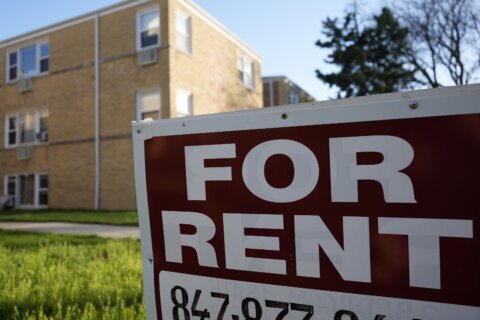Many people dream about designing and building their perfect home from the ground up. The home might be for raising a family or for retirement. Either way, planning makes all the difference when it comes to making your custom dream home a reality.
“If you find the right people, building a house is one of the great joys in life,” says Duo Dickinson, an architect in Madison, Connecticut, and the author of “The House You Build” and other works.
But building a home from scratch is not a simple job. Once you find the site, the process is likely to take at least another year and will involve, at minimum, an architect, an engineer, a builder and perhaps specialized designers for kitchens, baths and other elements.
In most cases, the best place to start is with an architect, who will design the house and create blueprints you can use to get bids from builders. Some companies provide design-build services, which have pluses and minuses. Because the architect and builder are part of the same company, they have experience working together. But you won’t have the opportunity to get bids from other builders once the plans are ready.
[See: 12 Home Improvement Shortcuts That Are a Bad Idea.]
Ideally, you want to find your architect before you buy the land, since not all lots are created equal. In addition to general location, which is important for all homeowners, you’ll need to assess how suitable the lot is for building, what utilities are available and how the property can be reached by road. You must also research city and county rules to determine what kind of home can be built on the land.
“The thing that you have to pay the most attention to is the site,” Dickinson says. “You can’t build the site. You can only make something that exists in the place.”
An architect not only will understand all those issues, but he or she can also figure out where to place the house to best take advantage of views, sunlight, shadows, trees and more.
“What the architects do is help you work through the opportunities of the site,” says Elissa Morgante, a partner at Morgante Wilson Architects in Chicago. “Having a professional helps you understand the property you are buying.”
Once you have chosen a site, it’s time to shift your focus to the design of your home. When selecting an architect, ask a lot of questions about the design process. You want to collect photos of rooms you like and dislike, even if you don’t know why certain rooms appeal to you and others don’t. You can share those with the architect, while also outlining basic details about the home such as the number of rooms, floor plan and how many levels you would prefer.
“An architect should be able to fly through a lot of ideas quickly with you,” Morgante says. “Even a very simple house can be a disaster or an absolute gem.”
Sharing your budget for the house with your architect will make it easier to discuss whether different features are worth considering for your price range. A multistory house, for example, is cheaper to build than a single-story house, but it may not be the best choice for a retirement home. You may be set on a stone house until you discover it costs 50 percent more than a wood-frame house.
“We try to help them make educated, informed decisions,” Morgante says. “I think knowing what you want is pretty hard for a lot of people.”
Once you and the architect have agreed on the design, the architect will draw up blueprints you can use to get bids from at least three builders. Ask everyone you know for recommendations, including your architect and any real estate professionals you’ve worked with.
“Get a real estimate and check it twice and three times,” says H. Dale Contant, president of Atlanta Design & Build. “Just make sure every detail is covered.” You want to make sure that the contract is clear about what is and isn’t included, what the allowances are for appliances, flooring and other elements — or what specific fixtures are included, down to model number — plus the contract should include a schedule of progress payments and detail the process for making changes.
[See: The 20 Best Places to Find a Job in the U.S.]
Once you’ve narrowed your choice to one or two builders, ask for references and talk to previous clients, visiting the homes that were built if you can. The contract should be extremely detailed — down to the exact model of fixtures and appliances included. “The best way to protect yourself is to make sure that you’ve got all the numbers lined up that you possibly can,” Contant says.
You also want to find a builder who will work with you and your architect. For the next year, your team will be a big part of your life. “You want to genuinely like the team,” Morgante says. “You’re going to spend a lot of time with them.”
Here are five tips for building a custom home without losing your mind and your shirt:
Know what you want before you start. An architect will help you create the exact plans for your home, but you need to have a sense of how many rooms, the preferred building materials, the size and the style of the home before you start. Some of those details may change during the planning process, but you can save time by going in with more information.
Don’t skimp on the planning process. You can easily change floor plans, materials and designs while everything is still on paper. Once building starts, changes get expensive. “You can make an enormous number of changes if it hasn’t been framed yet. After that, any change will cost you money,” Dickinson says. You should keep in mind, he adds, that once building decisions are made they are difficult to undo. So take your time when planning the house, and avoid jumping into the building stage before you’re ready.
Check references and licensing. You should do this with both the architect and the builder and any other professionals you are responsible for hiring. You want to talk to references in detail about how the process of building their homes went. Visit the final results if you can.
Get everything in writing. The contract with both the architect and the builder should be extremely detailed, laying out what services are to be performed, the timetable and a schedule of progress payments. If you can’t list specific makes and models of bathtubs, air conditioners, appliances and other features in the building contract, have the builder write in allowances with specific dollar amounts.
[See: 8 Easy Renovation Projects Every Homeowner Can Do Now.]
Visit the site frequently. Questions come up often about exactly how something should be done. The architect should visit at least weekly, but you want to be on site frequently, too, to answer questions and make sure you like the way things are going. If you live nearby, plan to stop by several times each week — if not daily — to help make decisions and assess the progress. “You really have to turn other aspects of your life off and dedicate yourself for the next six months to a year,” Dickinson says. “It’s not just you doing a house. It’s a village.”
More from U.S. News
The 20 Best Affordable Places to Live in the U.S.
The 20 Best Places to Live in the U.S. for Quality of Life
8 Types of Roads That Can Have a Big Impact on Home Sales
How to Design and Build Your Own Custom Home originally appeared on usnews.com







